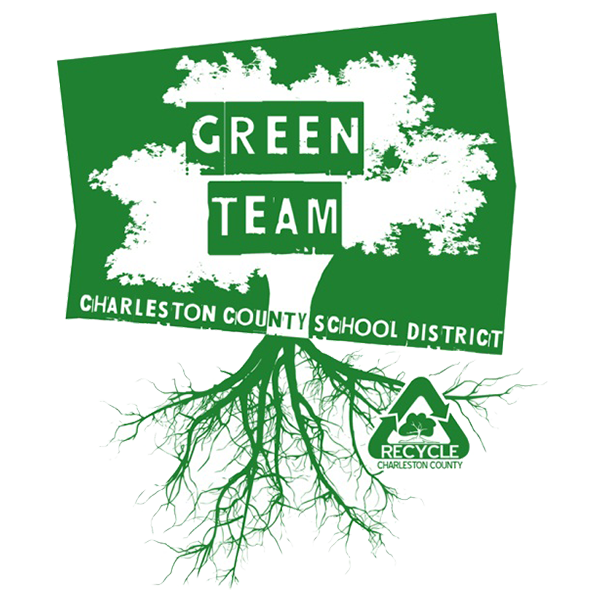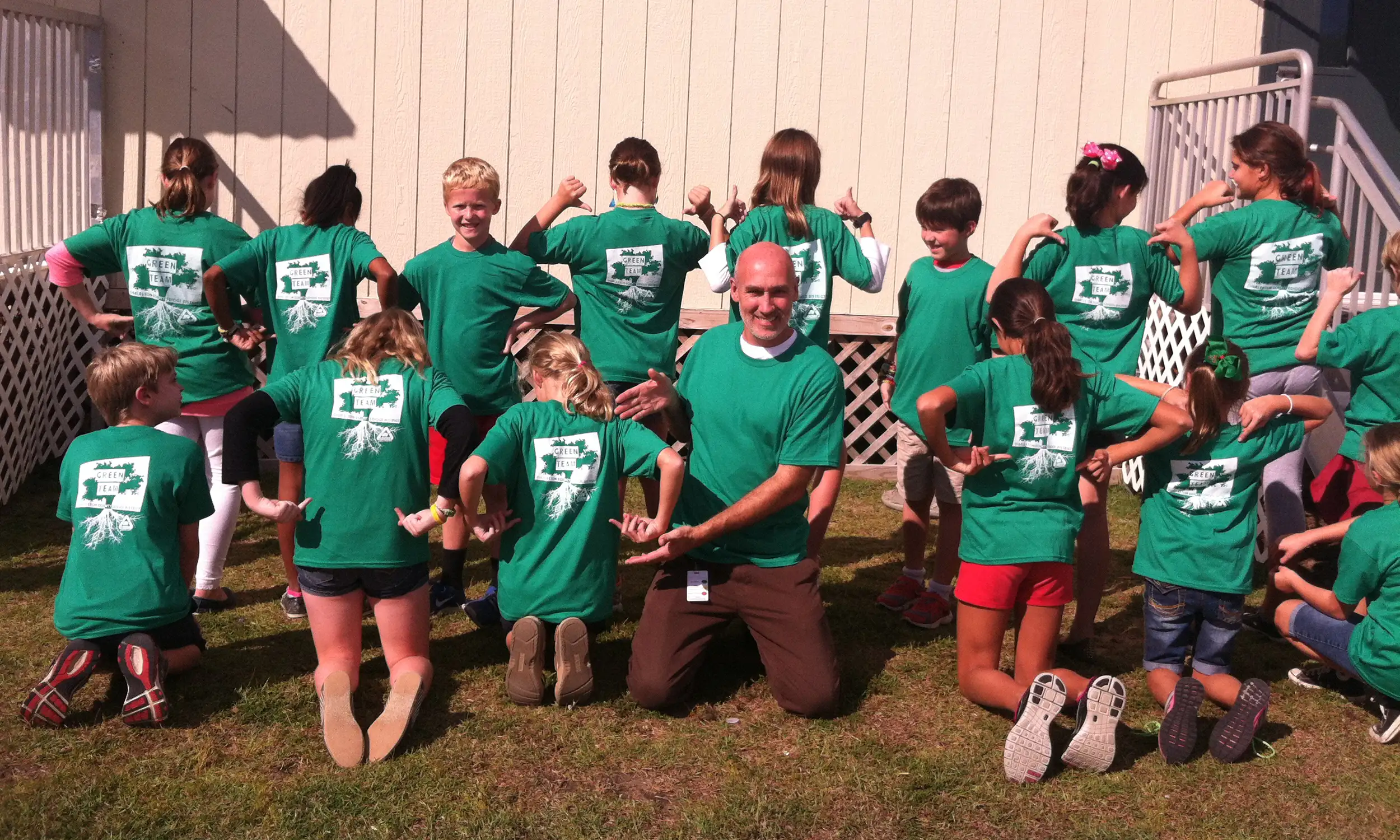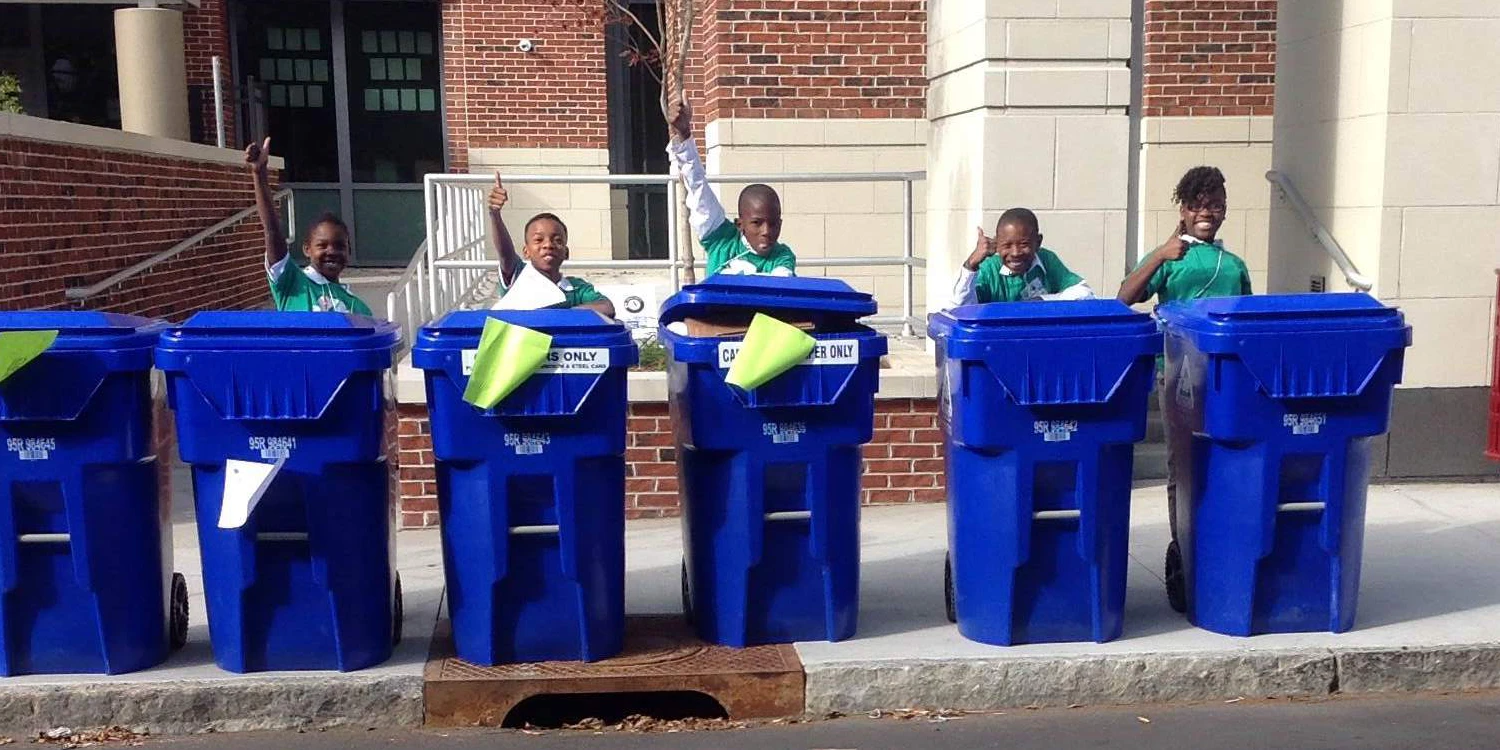Student Green Team

The purpose of creating a Student Green Team is to empower and provide leadership opportunities for students to organize and implement sustainable activities at school. Having a Green Team in place will set a standard for environmental stewardship for school stakeholders: students, faculty, administration, staff and parents. With the assistance of a team coordinator, this student based group identifies issues, makes recommendations and takes action towards greening the school. Since many activities, such as recycling and waste reduction, involve the schools administration and maintenance staff, efforts need to be coordinated with school operations prior to implementation.
Green Team Coordinator Guidelines
This should be the first step to coordinate student involvement at your school. For example, this may be as simple as coordinating a time with your principal or AP to request permission for students to assist with recycling collection or making general announcements to encourage recycling in the cafeteria. Support from the top down will ensure an effective initiative.

Students should view being a member of the Green Team as an exciting opportunity to effect change at their school. A competitive component may be helpful to eliminate those students who are less serious about this opportunity and support this endeavor as serious and respectable.
- Consider an application for students to "apply" for membership. View Example
- Offer incentives for Green Team members. Incentives should be age appropriate and school specific such as: offering school money (i.e. Owl Bucks or Wildcat Dollars) or casual day for schools that require uniforms. Charleston County Environmental Management (CCEM) will assist Green Team coordinators to provide support and funding for motivational incentives. Additionally, CCEM will provide a Green Team Member Kit to incentivize and reward students for their efforts. The contents of the kit may include the following:
- Green Team T-shirt
- Reusable water bottle
- Green Team lanyard which members would wear when collecting recyclables or educating students
- Recycle Right Post-It notes for students to leave behind to show that recycling was occurring properly
- Other promotional items
- Establish an end-of-the-year award program to recognize exemplary members. Outline criteria for green team member recognition and utilize procedures already in place at your school for end-of-the-year awards. Provide school staff and faculty with this information early in the school year in order to identify behaviors and initiatives a student deserving this award should be practicing.

Depending on how you decide to structure your team, this can be as simple as scheduling a meeting to divide up responsibilities for collecting recyclables within the school or more involved if your school has a 3-way waste sort collection station in the cafeteria. Monitoring these stations during lunch would entail utilizing sign-up sheets to rotate lunch duty schedules. A few examples of details to consider when thinking through job descriptions are listed below:
- Decide when the recycling will be collected within the school.
- Determine how teachers will know when the classroom recycling will be collected (i.e. perhaps via a PA announcement or a sign posted in the faculty lounge room).
- Will students collect recyclables before school, during school hours or after hours? If recycling is collected during school hours, teachers will need to set their recycling bins outside their classrooms in the hallway. Remember to include additional areas around the school such as: workrooms, offices and media centers.
- Involve the day porter to assist with the logistics of recycling collection. He or she may need to be more involved if younger students (elementary age) will be collecting. Student involvement in the cafeteria is strongly encouraged but should not be initiated until proper and consistent scheduling can be established.
In order to keep students interested in participating, providing innovative activities is recommended. Suggestions for keeping students engaged are listed below.
- Invite guest speakers to a Green Team meeting. Schedule the presentation after school or during a school special interest time slot. From plastic pollution in water sheds to biodiversity and solar energy, there are numerous organizations that would appreciate an opportunity to energize and inform students. Contact CCEM's Greening Schools Representative for guest speaker recommendations.
- Utilize students to educate their peers throughout the school. Peer based learning provides applicable motivation and incentives to increase support and participation. Perhaps once a month the eighth grade students teach the sixth grade students about "How to Recycle Right" or a topic that they may have just learned about, like plastic pollution in our oceans. Students could create a presentation or a video to educate another class or a small group of teachers. This educational networking creates ownership and pride for these students and helps to build interest and popularity for Green Teams.
- Get your Green Team to perform a waste audit which entails sorting through a sample of school generated trash (cafeteria trash or classroom trash) and classifying it into groups, such as recyclable paper, recyclable containers or landfill. This would be a valuable tool to show students a glimpse of the resources that are being thrown away at their school. A waste audit could be the stimulus to create an awareness campaign in your school.

In order to keep students interested in participating, providing innovative activities is recommended. Suggestions for keeping students engaged are listed below.
- Invite guest speakers to a Green Team meeting. Schedule the presentation after school or during a school special interest time slot. From plastic pollution in water sheds to biodiversity and solar energy, there are numerous organizations that would appreciate an opportunity to energize and inform students. Contact CCEM's Greening Schools Representative for guest speaker recommendations.
- Utilize students to educate their peers throughout the school. Peer based learning provides applicable motivation and incentives to increase support and participation. Perhaps once a month the eighth grade students teach the sixth grade students about "How to Recycle Right" or a topic that they may have just learned about, like plastic pollution in our oceans. Students could create a presentation or a video to educate another class or a small group of teachers. This educational networking creates ownership and pride for these students and helps to build interest and popularity for Green Teams.
- Get your Green Team to perform a waste audit which entails sorting through a sample of school generated trash (cafeteria trash or classroom trash) and classifying it into groups, such as recyclable paper, recyclable containers or landfill. This would be a valuable tool to show students a glimpse of the resources that are being thrown away at their school. A waste audit could be the stimulus to create an awareness campaign in your school.
Charleston County
ChasCountyGov
ChasCountyGov
Charleston County Government
CharlestonCountyGovernment
CharlestonCountyGovernment
CharlestonCountyGov
ChasCountyGov